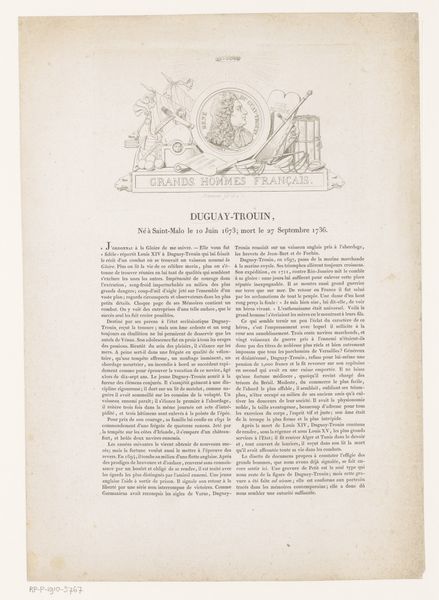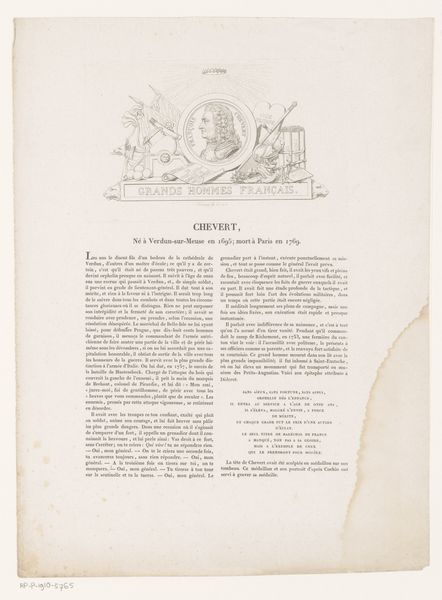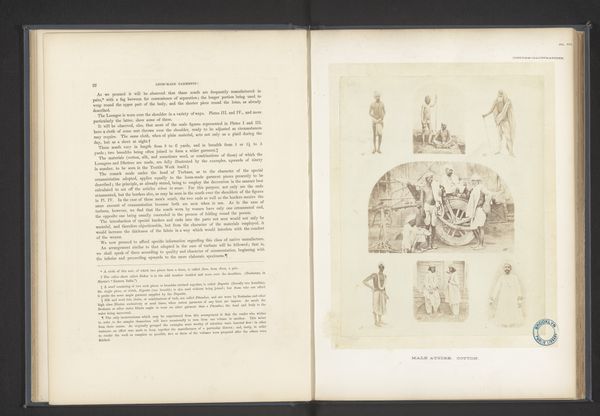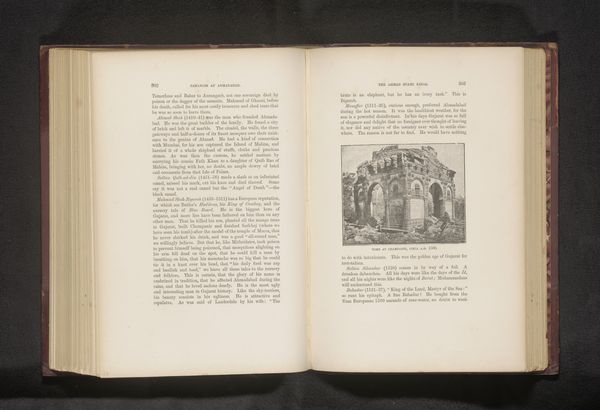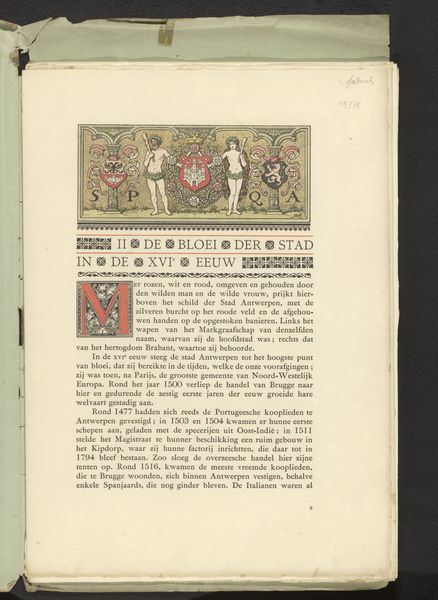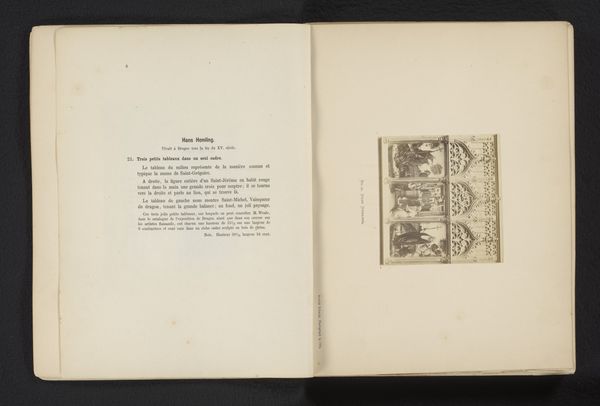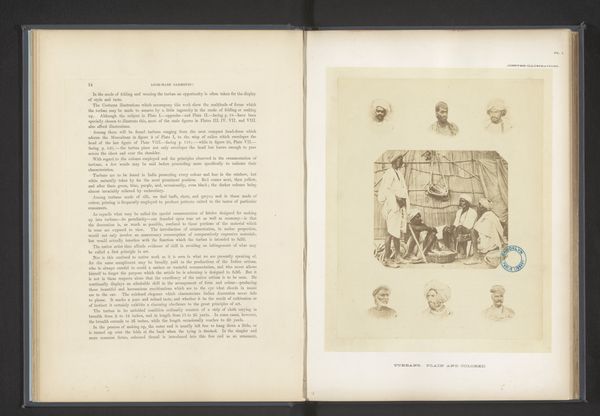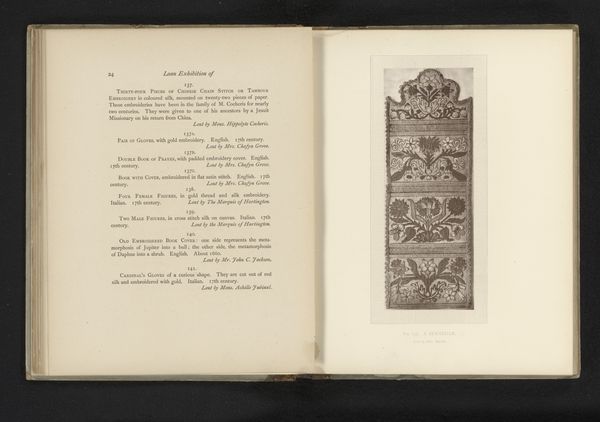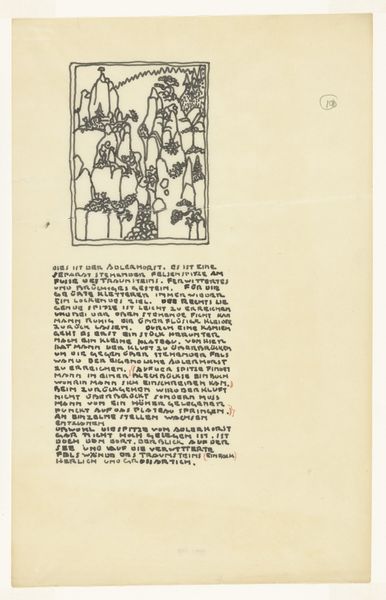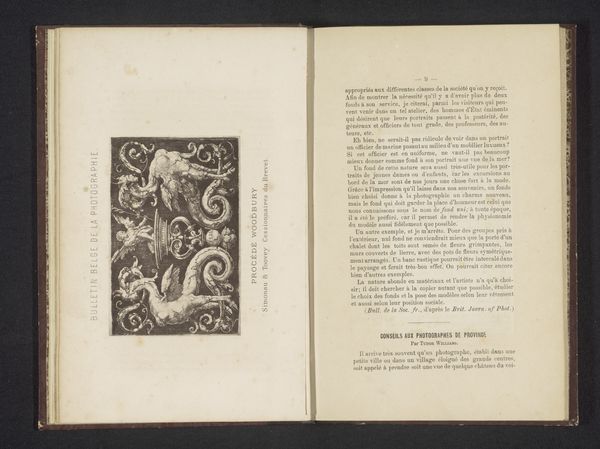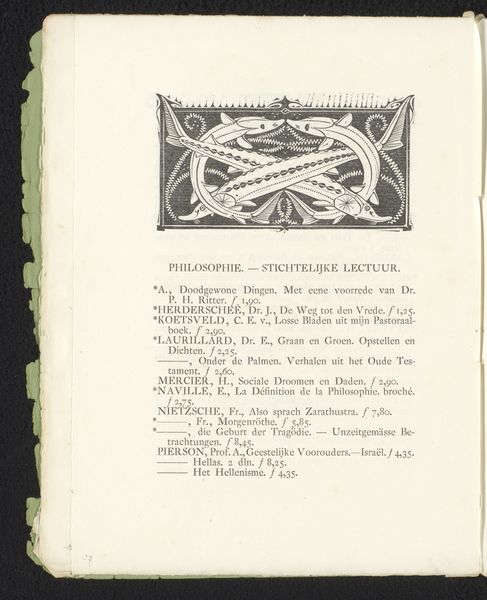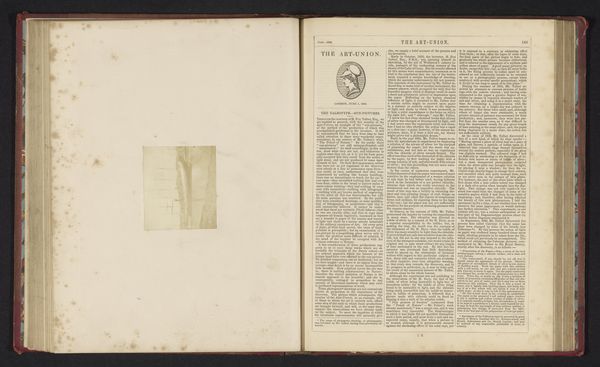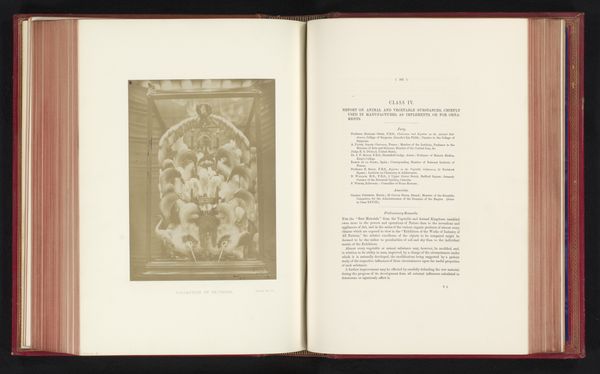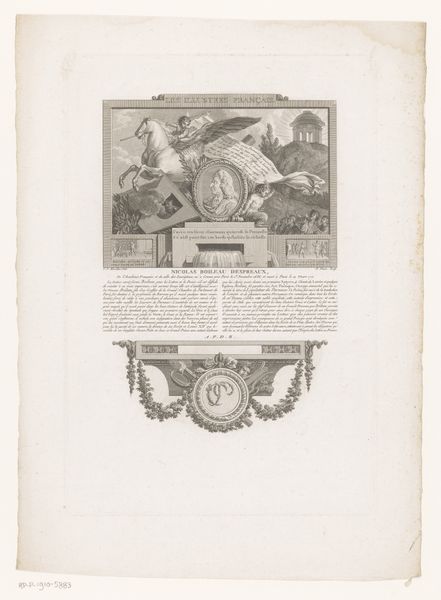
Uitbeelding van diverse kunstdisciplines met ornamenteel kader Possibly 1880 - 1889
0:00
0:00
graphic-art, print, paper, typography
#
graphic-art
#
aged paper
#
homemade paper
#
paper non-digital material
# print
#
sketch book
#
personal journal design
#
paper
#
personal sketchbook
#
typography
#
journal
#
sketchbook drawing
#
storyboard and sketchbook work
#
sketchbook art
Dimensions: height 277 mm, width 217 mm
Copyright: Rijks Museum: Open Domain
Editor: This is "Uitbeelding van diverse kunstdisciplines met ornamenteel kader," possibly from between 1880 and 1889 by an anonymous artist. It's a print on paper, reminiscent of a journal or sketchbook page. It gives me the impression of a handmade advertisement. What's your perspective on this? Curator: Looking at this from a materialist angle, it’s important to consider the production and consumption of printed materials like this at the time. The "aged paper" and "homemade paper" tags suggest a particular socio-economic context. This wasn’t mass-produced on a slick, industrial scale, but likely involved more localized craftsmanship. Notice the different artistic activities represented—are they placed in any deliberate hierarchy, reflecting contemporary social attitudes towards the different disciplines? Editor: That’s a good point. I hadn't considered the hierarchy. What do you mean about socio-economic context? Curator: Well, the slightly rough quality suggests a certain level of accessibility. Perhaps this publication was aimed at a middle-class audience interested in the arts, rather than solely for elite patrons. The print medium itself, cheaper than painting, signals wider distribution. How does the ornamental frame contribute to your understanding of its function, both economically and aesthetically? Is it a marker of quality, a strategy for attracting readers? Editor: I see. The frame adds a touch of class, but the overall impression is still quite utilitarian. It makes me think about who was actually making these prints. Were they skilled artisans or piece-workers in a print shop? Curator: Exactly. The labor involved is central. What does this reveal about the status of graphic arts versus “high art” like painting or sculpture during this period? Was it regarded as a craft, a trade, or an art form in its own right? Exploring these questions of materiality and production offers valuable insights. Editor: It’s interesting how considering the physical materials and the means of production can completely change my understanding of this seemingly simple print. I definitely appreciate the social context more now. Curator: Indeed. Paying attention to these aspects can help us move past simply admiring the image and begin to understand its place in a much broader cultural and economic landscape.
Comments
No comments
Be the first to comment and join the conversation on the ultimate creative platform.
